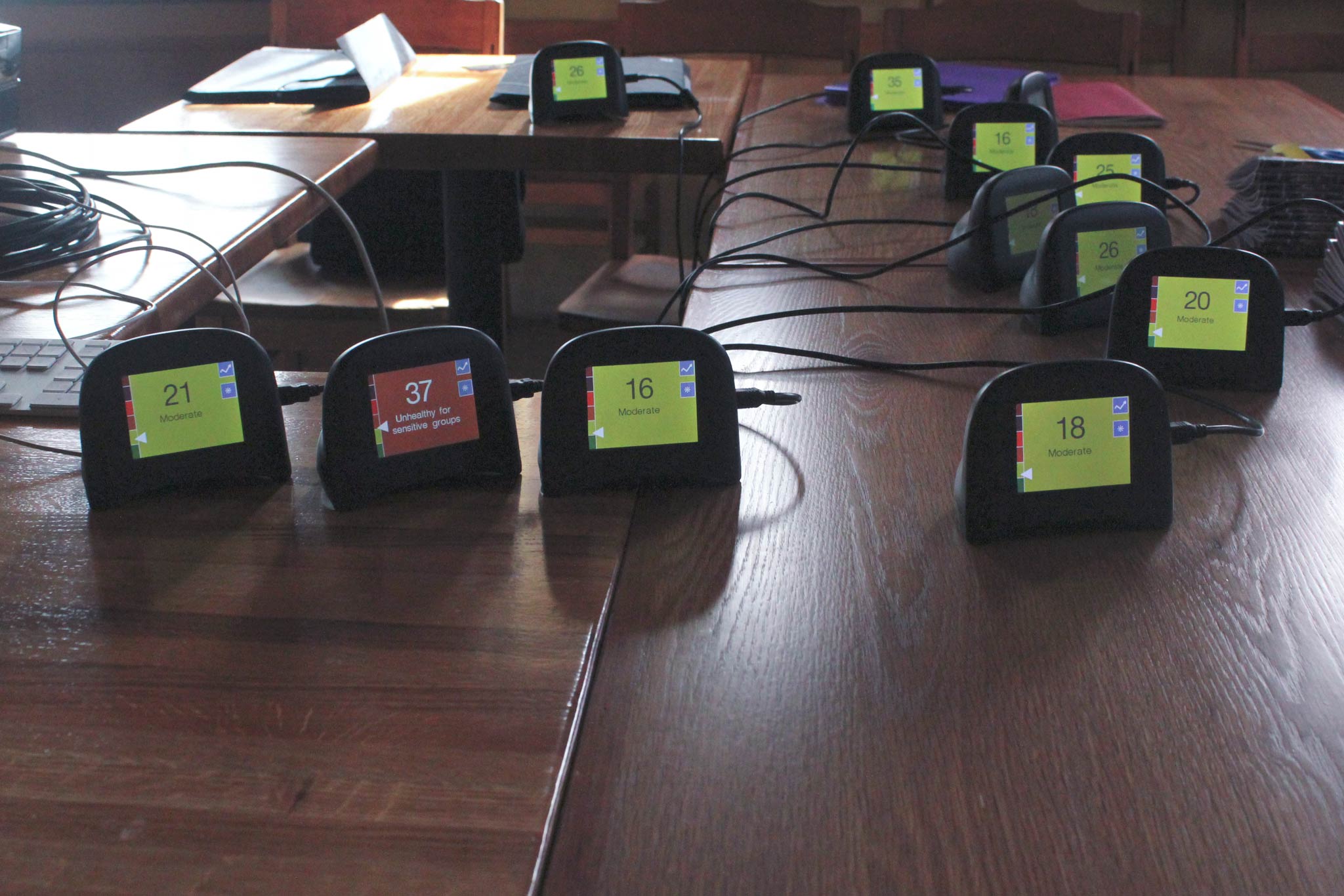The Citizen Sense research group held a monitoring workshop, “frack walk,” and roundtable* in mid-October with residents of northeastern Pennsylvania. During these events, we distributed and installed monitoring kit, had discussions with developers and users of monitoring technology, met with local landowners to learn more about environmental disturbances caused by shale gas production, and discussed with residents how best to go about monitoring air pollution in the area.
The Citizen Sense kit distributed during these events has been has been developed in response to the concerns of community members, who provided information via Citizen Sense “logbooks” that asked for input on what the key concerns were for natural gas infrastructure in relation to air pollution. The Citizen Sense kit itself, which was distributed to around 30 participants, contains a passive sampling badge for monitoring BTEX emissions (or benzene, toluene, ethylbenzene and xylene, which are substances associated with gas production and that are also hazardous to human health); a “Speck” device for monitoring particulate matter (PM) 2.5 (and these devices were generously loaned to us from the Create Lab at Carnegie Mellon); and a Citizen Sense logbook with instructions for use. Along with the Citizen Sense kit, three Frackboxes developed by Citizen Sense were installed at key infrastructure sites.
The Citizen Sense kit attempts to provide ways for participants to document pollution events and experiences, and to observe patterns and relations that emerge from collected data. Citizens can also report their observations through telephone calls to a Citizen Sense “observation line,” and by uploading observational data to a Citizen Sense kit platform.
 Residents in Northeastern Pennsylvania have now been using the prototype Citizen Sense Kits for monitoring air quality for just over one month, and there have been numerous questions, observations, and new data points generated. Since we deployed the kits we have received many reports on the ways in which people are experiencing the air quality through these devices. The reports also document the ways citizens are using kits and the suggestions for new functionality and use.
Residents in Northeastern Pennsylvania have now been using the prototype Citizen Sense Kits for monitoring air quality for just over one month, and there have been numerous questions, observations, and new data points generated. Since we deployed the kits we have received many reports on the ways in which people are experiencing the air quality through these devices. The reports also document the ways citizens are using kits and the suggestions for new functionality and use.
The Citizen Sense kit is very much a technology in progress, and what has been an integral part of the development of the kit is to understand how people take up and use the monitoring technology in multiple ways. In this sense, citizens have been invited to work with us in the development of the kit, as well as to disrupt or rework its uses. The use of the monitoring kit has also presented residents with a series of different problems to be addressed, from how to prevent a sampling badge becoming wet in the morning dew, to creating bespoke housing for the Speck devices in order to monitor outdoors.
We will be adding further news of monitoring kit, practices and eventual findings on this site in the months ahead.

*Roundtable, walk and workshop contributors included Mike Taylor from Create Lab at Carnegie Mellon, David Brown from Southwest Pennsylvania Environmental Health Protection (SWPA EHP), Nancy Wottrich (expert local ecologist), Rebecca Roter from Breathe Easy Susquehanna County (BESC), Laurie Barr from Save Our Streams, Nadia Steinzor from Earthworks, Bruce Braun from the University of Minnesota, and Michael McCawley from West Virginia University.








